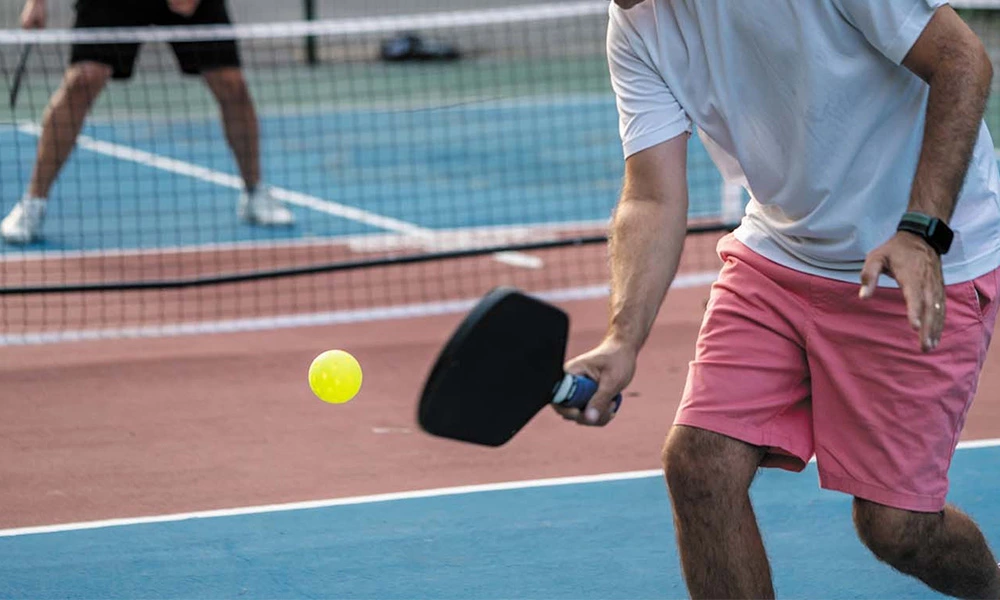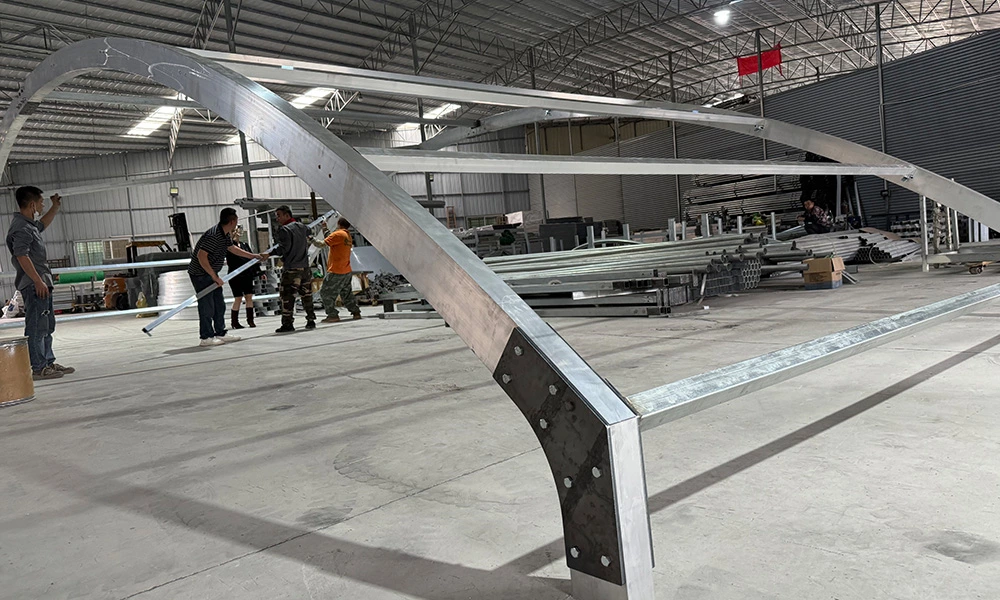Padel vs Pickleball: What Sport is Replacing Pickleball?
As sports continue to evolve, some once popular sports have gradually faded from the public eye, while other emerging sports have risen rapidly. Pickleball, as a sport that has been popular for decades, has gradually lost its unique status, and it is Padel that has risen in this wave. With its unique gameplay and higher popularity, this sport is becoming a new fitness and entertainment choice for people.
What is padel?
Padel is a sport that combines elements of tennis and squash and is usually played in an enclosed court. The court is about 20 meters long and 10 meters wide. The game is usually played by two teams of two players, using special stringless rackets and lightweight balls.
The rules are similar to those of tennis, but the ball can be hit after bouncing off the wall, making the game faster and more interesting. Due to its ease of use and low physical requirements, padel has quickly become popular around the world, attracting participants of all ages. Many countries have built dedicated courts in cities and villages, which has promoted the popularity of this sport.
Padel is not only a good way to exercise, but also promotes social interaction. Many people make new friends through this sport. With the increase in events and leagues, padel is gradually developing into an international sport.
What is Pickleball?
Pickleball is a sport that combines elements of tennis, table tennis, and badminton, usually played on a small court. It uses a plastic ball and a special racket similar to a tennis racket, and players compete by hitting the ball on both sides of a low net.
Pickleball originated in Baldwin Island, Washington, USA, in 1965 by three friends, Joel Pritchard, Bill Bozman, and Alan Malmer. At that time, they wanted to create a new family entertainment activity for children, so they combined the characteristics of several sports and gradually formed today's pickleball. Initially promoted only in families and communities, but over time, the sport quickly gained more and more fans and is now popular all over the world, especially among the elderly and recreational athletes.

The difference between the size of a pickleball court and a padel court
Pickleball courts are smaller and suitable for singles or doubles, measuring 13.41 meters long and 6.1 meters wide.
The court is divided into left and right sides, separated by an 86 cm high net in the middle. The layout of a pickleball court is similar to that of a tennis court, with a symmetrical left and right side, a serving area and a no-strike area in the backcourt, and sufficient buffer space around the court to ensure safety and smooth movement. Because pickleball uses lighter balls and small rackets, the court design is compact and requires less space.
In contrast, padel courts are larger, with a standard size of 20 meters long and 10 meters wide, and are usually suitable for doubles games.
The court is surrounded by glass walls and metal nets, allowing the ball to bounce off the wall, adding tactical and interesting aspects to the game. The net height of a padel court is slightly higher than that of a pickleball court, generally 88-92 cm. Because the overall space of a padel court is larger and the game relies on the rebound characteristics of the wall, the court design is more open and requires more floor space.
Differences between Padel and Pickleball Rackets and Balls
Padel and pickleball are two different ball sports, each with unique equipment and gameplay. Padel rackets are usually made of composite materials such as carbon fiber or fiberglass, with a thicker design, a hard foam center, and perforated surfaces to provide greater hitting power. In contrast, pickleball rackets are often made of wood or composite materials and have a lighter structure.
In terms of ball design, padel balls are smaller and fuzzier than pickleballs, and look similar to tennis balls, but with reduced pressure, less air inside, and more elastic when hit. Pickleballs are similar to wiffle balls, slightly heavier and perforated, and are usually made of composite plastics and come in indoor and outdoor versions.
The main differences between the two are the thickness and material of the rackets, as well as the size and design of the balls. Padel focuses more on strength and durability, suitable for fast and powerful shots, while pickleball emphasizes lightness and flexibility, suitable for a variety of venues.
Differences in play and rules between pickleball and padel
Compared with Pickleball, Padel has obvious advantages in both gameplay and appeal. Padel has simple rules, and both beginners and experienced players can quickly get started. Compared with Pickleball, Padel has a smaller court and is surrounded by walls, which makes it easier for players to control the direction and speed of the ball. Players can not only increase the diversity of the game by hitting the walls in front and behind, but also increase the drama and entertainment of the game through this unique rule. In contrast, although Pickleball is also a simple and easy-to-learn sport, its open field and relatively simple rules cannot provide a game experience as varied as Padel.
Differences in Scoring Between Padel and Pickleball
Padel is usually played in an enclosed court with glass walls around it so the ball can bounce. The sport uses a scoring system similar to tennis, where both teams score points by hitting the ball, and the game is played in sets and sets, with a two-point lead required to win. Padel can be played in singles or doubles, with an emphasis on coordination and tactics.
The pickleball court is smaller, usually part of a tennis court, and uses a flat surface. Players use wooden or composite rackets to hit a lighter plastic ball. Pickleball is scored mainly by the sidelines, and only the serving team can score. The game is generally played in a best-of-three format, with each set up to 11 points, and also requires a lead of at least two points. Pickleball places more emphasis on quick reactions and strategy, and is suitable for participants of all ages.

Why padel can replace pickleball?
Padel pays more attention to team awareness
Padel pays more attention to teamwork, and the game is usually played in the form of doubles, which not only increases the fun of the game, but also enhances the importance of teamwork. Players need to cooperate tacitly and develop tactical strategies in the game. Compared with singles, this doubles mode is more interactive and challenging. Although Pickleball also has a doubles mode, Padel's teamwork and strategy are undoubtedly better.
Friendliness to the body and convenience of the venue
The reason why Padel can gradually replace Pickleball is also due to its friendliness to the body and the convenience of the venue. Compared with Pickleball or traditional tennis, Padel has less burden on the body. Due to the small venue, players do not need to run for a long time like tennis during the game, which greatly reduces the burden on the knees and joints. This is especially important for people who are older or have sports injuries. The friendliness of Padel attracts a wider range of people to participate. Although Pickleball is also a sport with low physical requirements, compared with Padel, the latter can still take good care of the players' physical health while providing fierce competition.
Padel courts are more suitable for urban residents
On the other hand, the layout and convenience of padel venues make it more suitable for urban residents. Padel courts occupy a smaller area and are easier to find in densely populated areas such as city centers, unlike Pickleball, which usually requires a larger venue space. Young people and white-collar groups in cities are increasingly fond of quickly entering the sports state during short breaks, and padel perfectly caters to this need. Its compact venue layout and fast-paced game style make padel more popular in modern cities.
How difficult is padel to play?
Padel requires good hand-eye coordination, excellent footwork and movement, and good racket control. But the learning time is very quick.
Most people think that it seems easy to learn to play pickleball. The rules are simple, but the smaller courts and slower ball speeds make it difficult for new players to control the power and speed of the ball. Unlike pickleball, padel tennis has a low barrier to entry and is described as a hybrid of multiple racket sports, so people of all ages and different athletic abilities can participate.
How fit do you need to be to play padel?
Padel tennis is similar to many other paddle or racket sports. It does not require physical fitness, but if you are fit it will help your game. Having good cardiovascular endurance, agility, and strength will help maintain your performance level.
How popular is the sport of padel currently?
Padel tennis has grown rapidly, with a loyal following in urban areas such as New York City, and is also emerging in parks and community centers.
There are more padel tennis players today than there were a year ago, and certainly more than there were ten years ago. There are many places to play for players of any skill level. Plus, there are multiple professional tours, which means more people are watching the sport today than ever before.
Padel tennis offers the social benefits of close contact, teamwork and camaraderie between players. They vary in how easy it is to learn, but all are growing in popularity and are addictive. Padel is growing in popularity around the world, especially in Europe and South America, where the game is lively and social. Pickleball is a fast-growing sport in the U.S., suitable for all ages, and favored by family players for its accessibility and fun nature.




